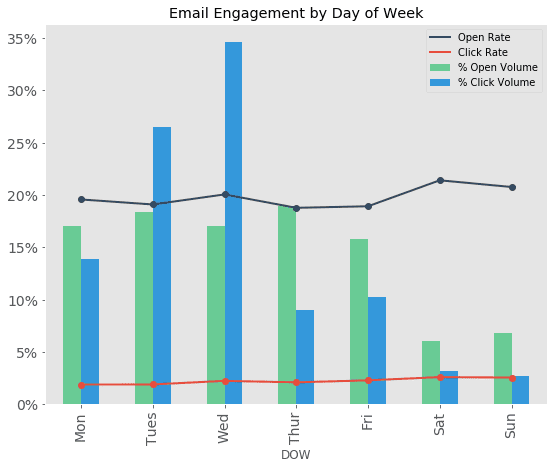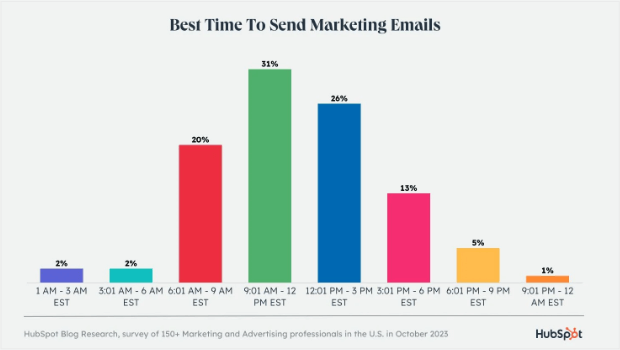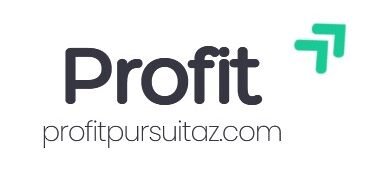Best Day for Sending Email Marketing: Maximize Engagement
Email marketing can boost business success. Choosing the right day matters.
Timing impacts open rates and engagement. Why does the day matter? People check emails differently each day. Some days, inboxes overflow. Other days, people are more relaxed and attentive. Understanding these patterns helps in choosing the best day to send emails.
It ensures your message gets seen and read. Every business aims for high open rates. And increased customer interaction. So, exploring the best day for sending email marketing is crucial. It not only improves communication but also supports business growth. In this post, we’ll dive into insights and strategies. They’ll help you pick the optimal day for your campaigns. Get ready to enhance your email marketing approach!
Optimal Days For Email Marketing
Choosing the right day to send email marketing can boost engagement. Timing is crucial to ensure your message is opened and read. Some days are better than others for reaching your audience effectively. Explore which days maximize email marketing success.
Monday Vs. Friday
Monday is often a busy day for many people. Emails sent on Monday may get lost in the shuffle. People are catching up after the weekend. They may overlook promotional emails. Friday, on the other hand, can be tricky. Many are winding down for the weekend. They may not focus on work-related emails. Consider your audience’s habits for better results.
Midweek Magic
Tuesday, Wednesday, and Thursday are often ideal for email marketing. These days have higher open rates compared to others. People have settled into their work week. They are more likely to engage with emails. Midweek emails find a sweet spot between busy Mondays and relaxed Fridays. Test different days to see what works best for your audience.

Credit: www.getresponse.com
Time Of Day Considerations
Choosing the right time of day to send your email marketing campaigns can significantly impact their success. The time you choose can determine whether your emails are opened immediately, saved for later, or ignored altogether. By understanding the preferences and behaviors of your audience, you can optimize the timing of your emails to maximize engagement and conversions. Let’s dive into the specifics of sending emails in the morning, afternoon, and evening.
Morning Vs. Afternoon
The morning is often considered a prime time for sending emails. People typically check their inbox first thing after waking up or as they settle into their workday. Sending your emails between 8 AM and 10 AM can capitalize on this routine. Your message might catch them as they sip their coffee or scan their inbox before diving into tasks.
Yet, mornings can be busy, with many emails competing for attention. If your audience consists of busy professionals, consider afternoon sends. Between 1 PM and 3 PM, people often take a break or transition between tasks. Your email might be a welcome distraction that prompts a click. Have you considered testing both times to see which yields better results?
Evening Opportunities
Evening sends are less conventional but can be effective under specific conditions. After a long day, people often relax and catch up on personal emails. Sending your emails between 7 PM and 9 PM might catch them in this relaxed state, increasing the chance of engagement.
However, the evening is a time when people might be away from their screens, spending time with family or engaged in leisure activities. This might not be the best time if your audience prefers a clear boundary between work and personal life. Could an evening send work for your audience, or would it be a missed opportunity?
Understanding the nuances of timing can help you craft a strategy that fits your audience’s lifestyle and habits. Experiment with different times and analyze your results. This experimentation can lead to insights that transform your email marketing success. What unexpected results have you seen when testing different send times?
Audience Behavior Insights
Understanding when your audience reads emails can boost engagement. Different days affect how people respond to emails. Knowing audience behavior helps in choosing the best day for email marketing.
Workweek Patterns
Most people check emails early in the week. Monday and Tuesday show higher open rates. People focus more on tasks and information as the week starts. Midweek, the attention might decline. People get busier with meetings and projects. Sending emails during the start of the week might get better results.
Weekend Preferences
Weekends offer a different pattern. People have more leisure time but less focus on work emails. Many might ignore promotional emails until Monday. Late Sunday afternoon might catch some attention. People prepare for the upcoming week. Timing matters. Knowing these patterns helps tailor your email marketing strategy.

Credit: optinmonster.com
Industry-specific Trends
Choosing the best day for email marketing varies by industry. Studies often highlight Tuesday and Thursday as optimal. These days see higher open rates and engagement.
In the world of email marketing, timing can be everything. However, the best day to send emails isn’t one-size-fits-all. It often depends on the industry you’re in. Understanding industry-specific trends can help you tailor your email campaigns for maximum impact. This can mean the difference between your email being opened or ignored. So, let’s explore how different industries approach this timing conundrum.Retail Sector
The retail sector often finds success with mid-week emails. Tuesdays and Thursdays tend to be particularly effective. Shoppers are more likely to engage when the workweek isn’t too hectic. In my experience working with a local boutique, sending promotional emails on Thursdays led to a noticeable uptick in sales. Why not test this in your own campaigns? Try sending emails with exclusive discounts mid-week and track the results. But what about weekends? They’re not as effective in retail. Many people are away from their inboxes, focusing on personal time. Stick to weekdays for the best response rates.B2b Communications
B2B email marketing operates under different rules. Monday mornings aren’t ideal. Professionals are catching up from the weekend, and your email might get lost in the shuffle. Instead, consider sending emails on Thursdays. Studies show this is when many decision-makers are more engaged. They’re winding down the week and may have more time to consider new opportunities. When I consulted for a tech company, we found that Thursday emails yielded higher open rates. This small change improved our client interactions significantly. Could a simple shift in timing boost your B2B engagement too? Remember, though, every audience is unique. Keep analyzing your data. What works for one industry might not work for another. Adjust your strategy based on how your audience responds. This is the key to email marketing success.Seasonal Variations
Understanding the best day for sending email marketing can boost engagement. But timing isn’t just about choosing a day of the week. Seasonal variations play a crucial role. Different seasons affect consumer behavior and email open rates. Knowing this can enhance your marketing strategy.
Holiday Periods
During holiday periods, email marketing strategies need adjustments. Shoppers are more active before major holidays like Christmas and Black Friday. Emails sent in the weeks leading to holidays often see higher open rates. Consider sending emails earlier in the week during these periods.
After a holiday, people may be less likely to engage. They might be overwhelmed with emails or taking a break. Plan your campaigns to maximize pre-holiday excitement and post-holiday recovery.
Summer Vs. Winter
Summer and winter bring different challenges and opportunities for email marketing. In summer, people often take vacations. This can lead to lower email open rates. Consider sending emails early in the week or late in the evening.
Winter months often see higher engagement due to more indoor activity. People spend more time checking emails. Adjust your campaigns to match these seasonal behaviors. Understanding these variations helps in crafting effective email marketing strategies.
Testing And Analytics
Finding the best day for sending email marketing is crucial. Testing and analytics play a vital role in this process. They help identify what works best for your audience. By analyzing data, marketers can make informed decisions. This leads to higher engagement and conversion rates.
A/b Testing Methods
A/B testing involves sending emails on different days. This helps determine which day yields better results. Create two versions of an email. Send them to similar audience segments. Compare open rates and click-through rates. This method provides valuable insights.
Test variables like subject lines, send times, and content. Each element can impact engagement. Consistently test and refine your approach. This ensures optimal performance for your campaigns.
Analyzing Engagement Rates
Engagement rates offer essential data. Metrics like open rates, click-through rates, and conversions matter. They show how your audience interacts with emails. Review these metrics to assess campaign success.
Use analytics tools to track performance. Identify patterns and trends over time. This data helps in understanding audience preferences. Adjust your strategy based on these insights.
Regular analysis is key. It allows you to stay ahead in the competitive market. With the right data, you can enhance your email marketing strategy.
Email Content Strategies
Email content strategies are crucial for effective email marketing. Crafting the right message increases engagement and conversion rates. Two key elements are the subject line and call-to-action timing. These elements determine the success of your campaign. Let’s explore how they impact your email strategy.
Subject Line Impact
The subject line is the first thing recipients see. It influences open rates significantly. A compelling subject line grabs attention instantly. Use clear, concise language. Aim for curiosity and urgency. Personalization boosts engagement. Include the recipient’s name or location. Avoid spammy words like “free” or “discount”. Test different subject lines to find what works best. Monitor the open rates to refine your approach.
Call-to-action Timing
The timing of your call-to-action affects click-through rates. Place it strategically within the email. Early placement captures immediate attention. Mid-email placement reinforces the message. Late placement can prompt action after reading. Ensure clarity and simplicity in your call-to-action. Use direct language like “Buy now” or “Sign up today”. Test different timings to optimize engagement. Analyze user behavior to understand what drives clicks.

Credit: optinmonster.com
Tools For Scheduling
Choosing the best day for sending email marketing can boost engagement. Tuesday and Thursday often show higher open rates. Use scheduling tools to plan your campaigns efficiently and reach your audience at optimal times.
Finding the best day to send your email marketing campaigns can be challenging. But did you know that using the right tools for scheduling can make this task much easier? With the right tools, you can automate your email campaigns and ensure they reach your audience at the optimal time. This can lead to increased engagement and better results from your marketing efforts.Automation Platforms
Automation platforms are a game-changer for email marketers. They allow you to set up your campaigns to send automatically at the best times for your audience. These platforms analyze data to suggest optimal sending times, and they can adjust for different time zones. Platforms like Mailchimp, HubSpot, and ConvertKit offer user-friendly interfaces and robust scheduling features. With these tools, you can create email sequences that automatically send based on user behavior or a specific timetable. This means you can focus more on crafting your message and less on the logistics of sending. Imagine setting up a campaign that sends out emails every Tuesday at 10 AM to your subscribers. These platforms can handle that with ease, ensuring your emails land in inboxes just when your audience is most likely to engage.Calendar Integration
Integrating your email marketing tools with your calendar can further streamline your scheduling. This integration allows you to plan your campaigns alongside your other business activities. It ensures you don’t double-book or forget important dates, which can be critical during peak seasons like holidays. Google Calendar and Outlook offer seamless integration with many email marketing platforms. This means you can see your email campaign schedule right next to your meetings and deadlines. It’s a simple way to keep everything in one place, reducing the risk of oversights. Have you ever missed sending an email because you forgot? Calendar integration can help prevent this, keeping your campaigns on track and your audience engaged. Consider how these tools can fit into your workflow. Do they align with how you plan your tasks? Scheduling tools are not just about convenience; they’re about maximizing your reach and impact. So, what’s holding you back from getting started?Conclusion
Choosing the best day for email marketing improves engagement. Tuesday and Thursday are popular choices. These days often see higher open rates. Timing matters too. Morning emails can capture attention. Afternoon sends might be effective as well. Testing different days helps find what works best.
Monitor results closely. Adjust strategies based on data and feedback. Stay consistent with your schedule. Consistency builds trust with your audience. Successful email marketing requires understanding your audience’s habits. Tailor your approach to their preferences. Keep messages clear and concise.
Engage with relevant content. Your efforts will pay off in the long run.
